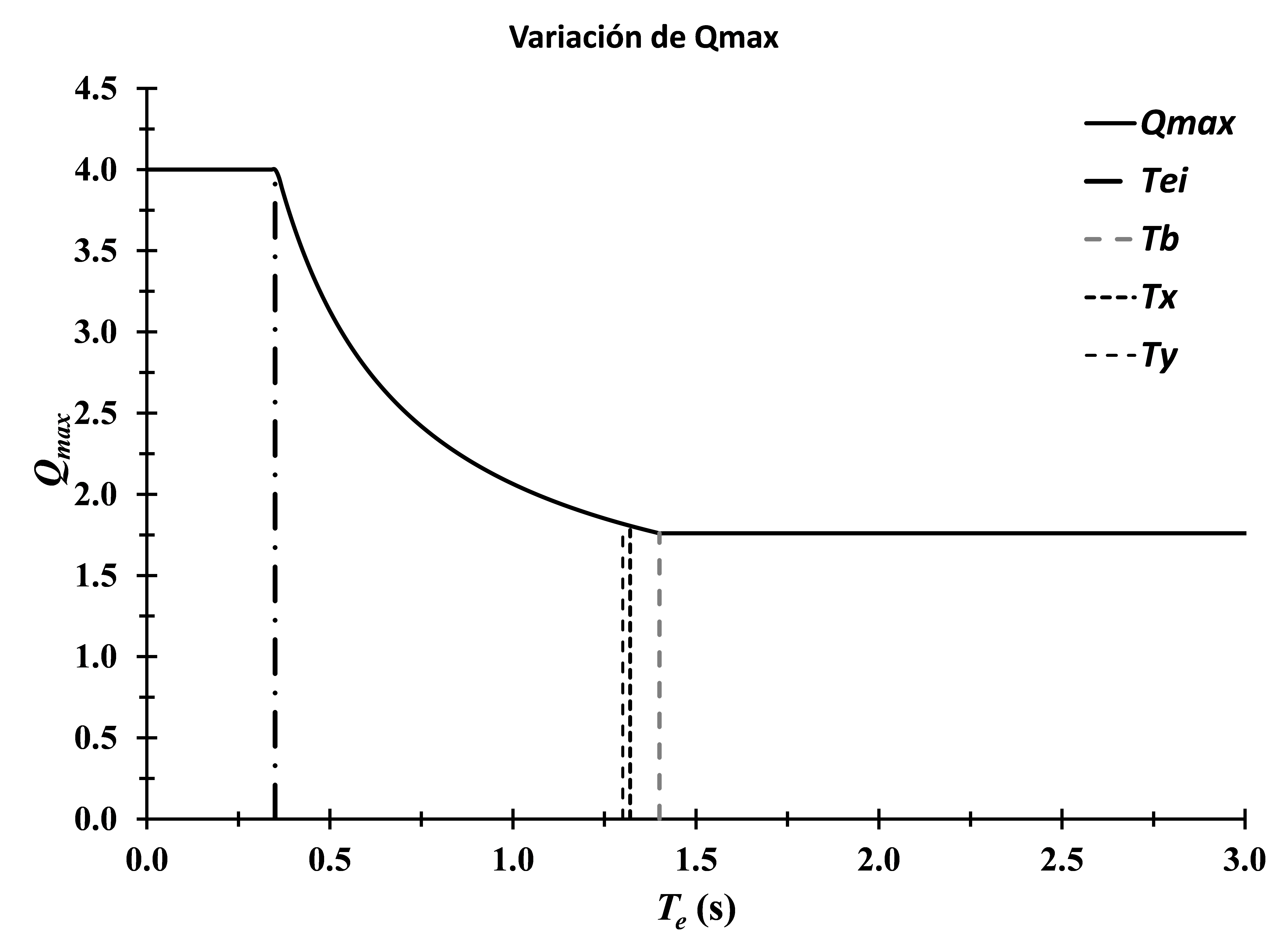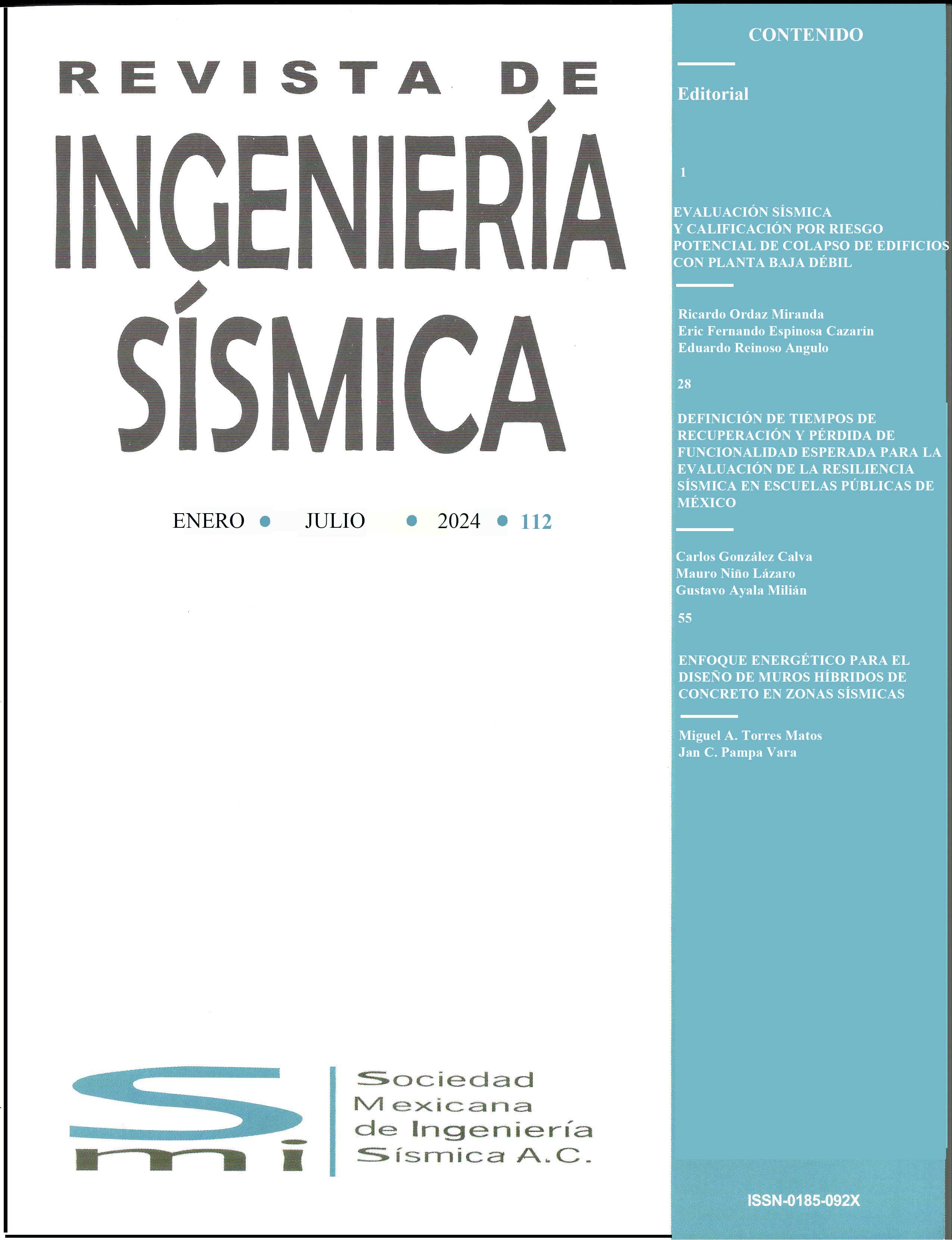MAXIMUM DESIGN SEISMIC BEHAVIOR FACTOR FOR BUILDINGS LOCATED IN THE CITY OF VERACRUZ, AND DESIGNED WITH THE MDOC-CFE-2015
DOI:
https://doi.org/10.18867/ris.105.566Keywords:
Seismic behaviour factor, seismic design, Civil Works Design Handbook of the CFE 2015Abstract
This study shows that in the process of the seismic design of a building for values of the seismic behavior factor (Q) of three or four, according to the Manual of Civil Works Design of the Federal Electricity Commission (MDOC-CFE-2015, for its acronym in Spanish), it may occur that the serviceability limit state governs the strength design of a structure, which it should not be. Thus, the designer will have to go through an iterative process that could require many iterations, significantly increasing the work. Therefore, a function is obtained to estimate the maximum value of Q to design a building, whose implementation considerably reduces said iterations.
Downloads
References
CDS-MDOC-CFE (2015), Capítulo de diseño por sismo. Manual de diseño de obras civiles, versión 2015, Comisión Federal de Electricidad, México.
Corona, G (2017), ECOgcW3, programa para análisis y diseño de edificios, Guía rápida de uso, www.gcingenieria.com
Elnashai, A S, y A M Mwafy, (2002), “Overstrenght and force reduction factors of multistory reinforced-concrete buildings”, The structural design of tall buildings, Vol. 11, pp. 329–351. DOI: 10.1002/tal.204
NTC-DC (2017), Normas técnicas complementarias para diseño y construcción de estructuras de concreto, Reglamento de construcciones de la Ciudad de México, Gaceta oficial de la Ciudad de México, México.
NTC-CA (2017), Normas técnicas complementarias sobre criterios y acciones para el diseño estructural de las edificaciones, Reglamento de construcciones de la Ciudad de México, Gaceta oficial de la Ciudad de México, México.
SAP2000 v.19.2 (2017), Integrated finite element analysis and design of structures, Computer and Structures Inc, Berkeley, California, Estados Unidos.
Rodríguez, M, y J C Botero, (1996), “Aspectos del comportamiento sísmico de estructuras de concreto reforzado considerando las propiedades mecánicas de aceros de refuerzo producidos en México”, Series del Instituto de Ingeniería, UNAM, 575.
Mander, J B, M J N Priestley y R Park, (1988), “Theorical stress-strain model for confined concrete”, Journal of Structural Engineering, ASCE, Vol. 33, No. 8, pp. 1804-1826. DOI: 10.1061/(ASCE)0733-9445(1988)114:8(1804)
Uang, C, (1991), “Establishing R (or Rw) and Cd factors for buildings seismic provisions”, Journal of Structural Engineering, ASCE, Vol. 117, No. 1, pp. 19-28. DOI: 10.1061/(ASCE)0733-9445(1991)117:1(19)






